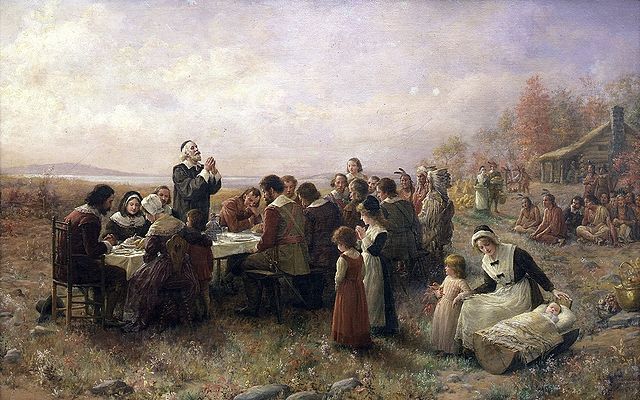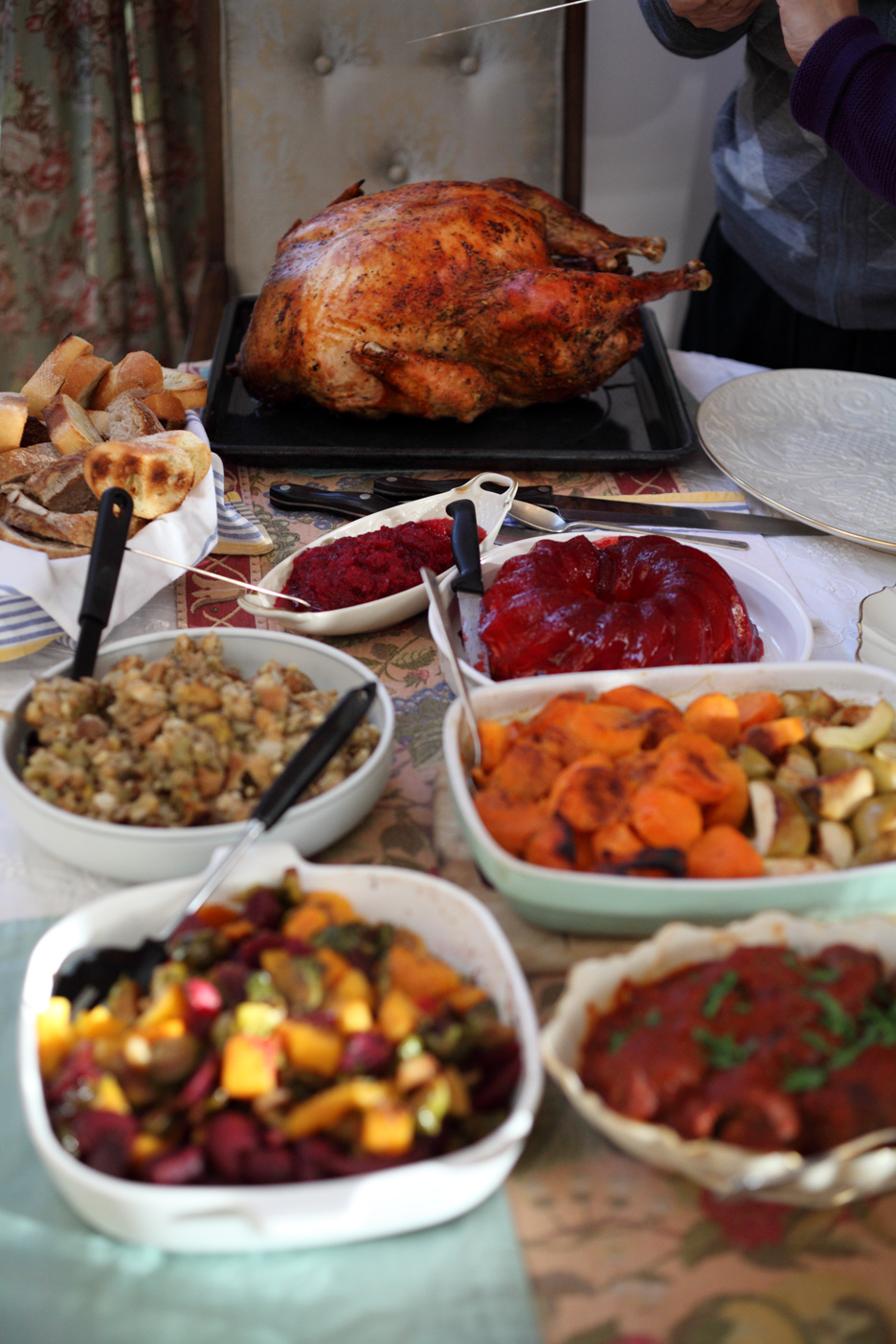Thanksgiving: Your Food Guide to the US Holiday
Thanksgiving is coming up quickly, but what’s going to be on your plate?

Photo via Wikipedia
Etymology
The word thanksgiving was first used in the 1630s, approximately a decade after the first Thanksgiving. The compound word thanks (a noun) and the present participle of give is used to refer to the ‘public celebration acknowledging divine favours.’ Certain prayers can be referred to as ‘thanksgivings’, a concept which hopefully underlies the meaning of the holiday tradition, being thankful for the good things in our lives.
The first ‘Thanksgiving’ meal and celebration was held by Plymouth Colony Pilgrims, who invited local Native tribes to share a meal and celebrate the hard year of toil culminating in that year’s harvest. They wanted to join together to ‘give thanks’ for the bountiful harvest that their ‘New Land’ had provided for them. What better way to celebrate than by throwing a huge party with a tonne of food?
Foodology
The first Thanksgiving was actually celebrated for 3 days and involved a variety of entertainment, hunting parties and all the food you could eat! Wampanoag tribes members are said to have brought 5 deer as gifts for the colonists and it’s clear that a huge feast was definitely in store. The first Thanksgiving had a different menu to the kind you would find today. We can assume venison (deer meat, probably used in a stew of some form) was eaten by all who attended, and records also mention the colonists hunting fowl for the feast. We can’t be sure that Turkey was served, but other birds like goose, swan, and pheasant would have been easily sourced and happily devoured by all at the celebration. These birds may have been seasoned with herbs, onions and nuts.

GIF via Giphy
Considering the feast was in celebration of the harvest, fruits and vegetables would have played an important role. In New England, where the Pilgrims landed, locally grown vegetables would have included things like carrots, spinach, cabbage, beans, onions, and corn. The corn might have been served as a sweetened mush for dessert, as that’s how it was typically served at that time. Sugar, though, was pretty much nonexistent- most of the sugar stores that the colonists brought with them from England, were completely used up by 1621- so molasses would have been used. Berries, too, were plentiful- even cranberries would have been eaten, though they wouldn’t have been made into a sauce like we might have today.
It may not have crossed your mind, but fish and seafood would have been a large part of the feast as well, as it is plentiful in New England, and it would have definitely been a part of their diet as it would be easy to harvest and catch- mussels would have been especially easy to find, cook and eat. Venison and mussels- talk about surf and turf!

Photo via Flickr
Turkey-ology
Today, Thanksgiving, or Turkey-day as some call it, is a time to get family and friends around the dinner table and take a moment to think about what you’re ‘thankful’ for this year. It could also be debated that Thanksgiving is a time to gorge yourself on fattening food, get into political arguments with your family and ultimately end up in a tryptophan-induced coma for the rest of the afternoon. The two options depend on you and your family, though often times which ever option you end up getting is entirely out of your control.
A typical Thanksgiving feast today consists of a giant roast turkey (or chicken if you’re really not into turkey), mashed potatoes, cranberry sauce, other vegetables like carrots, broccoli and cauliflower, gravy and the all important stuffing or dressing. For dessert, you’d often indulge in a big ol’ slice of pumpkin pie. You’ll notice similar elements to the original Thanksgiving (fowl, vegetables) but some of the bigger differences exist because that particular plant wasn’t indigenous to New England (the pumpkin and the potato hadn’t been introduced to New England by 1621).
Quite a few Thanksgiving staples are regional. For example in the South, you will probably find a sweet potato pie on the menu along with collard greens and cornbread. You may also find something called the ‘Turducken’- a fowl Russian nesting doll, it has a duck inside a chicken inside a turkey. On the East coast you might find oyster stuffing, maple glazed carrots or even clam dip. All over the USA, you’ll find goodies like macaroni and cheese, and pecan pie.
In the end
If you’re scratching your head, thinking aren’t there other places that celebrate Thanksgiving? Well, Canada does, but it has it on the second Monday of October where American Thanksgiving is on the 4th Thursday in November. The two countries have similar menus for their feasts, with regional favourites like seafood on either coast, and maple glazing playing a particularly important role in the Canadian Thanksgiving. With both though, the idea of thinking on the good things and being thankful for them are the same. Maybe there are slightly less political arguments… though I make no promises of that.
Now that Thanksgiving is around the corner: what will you be thankful to feast on?


